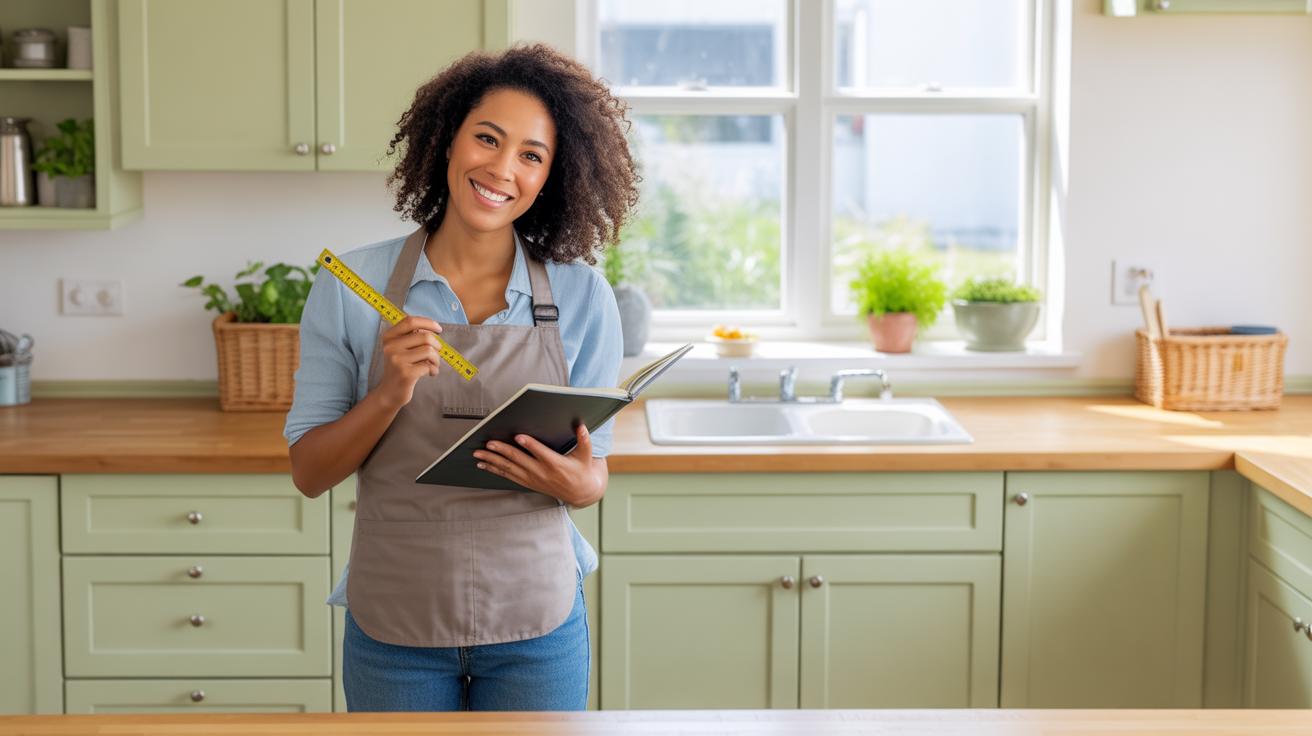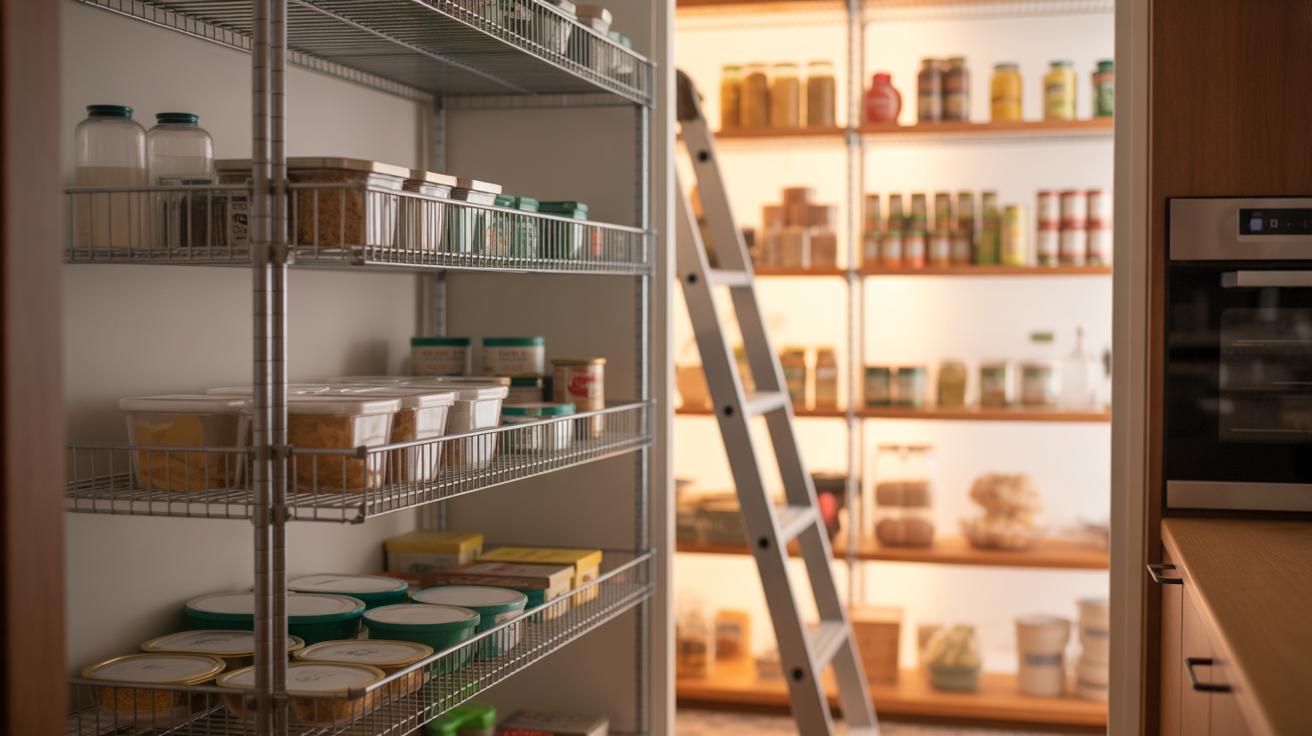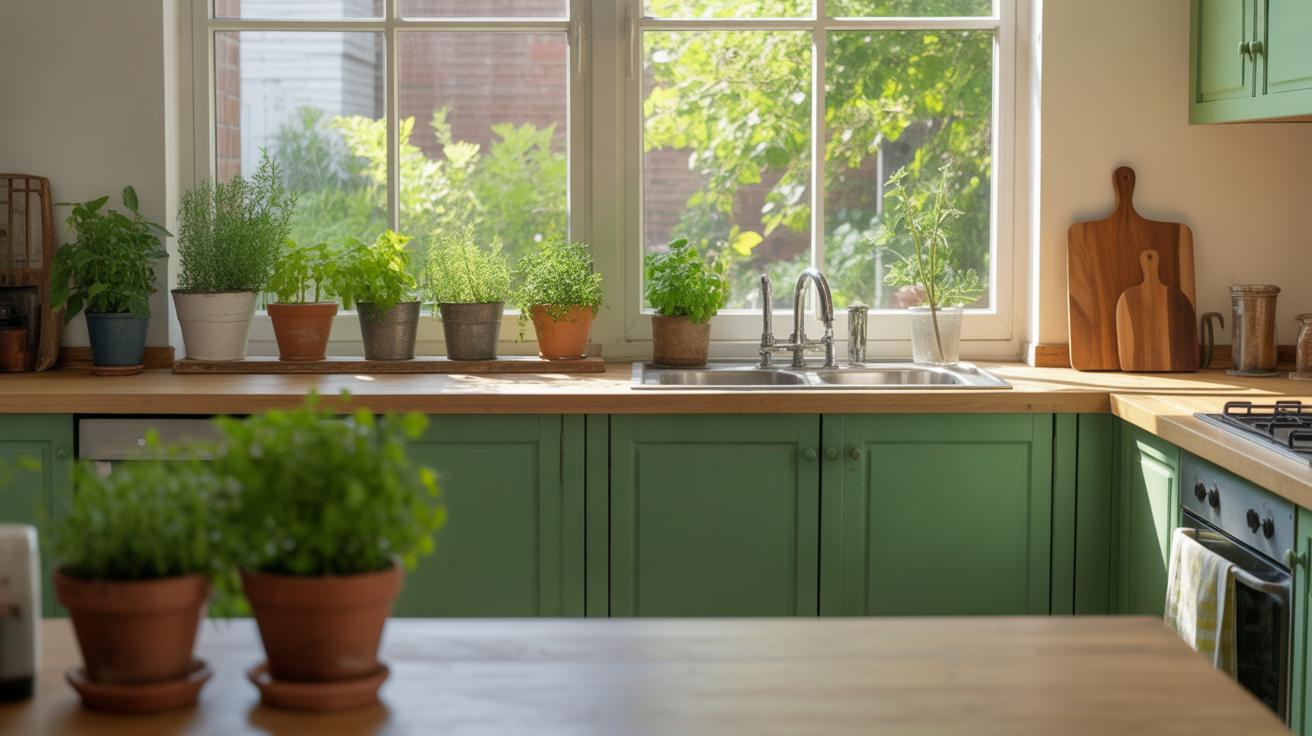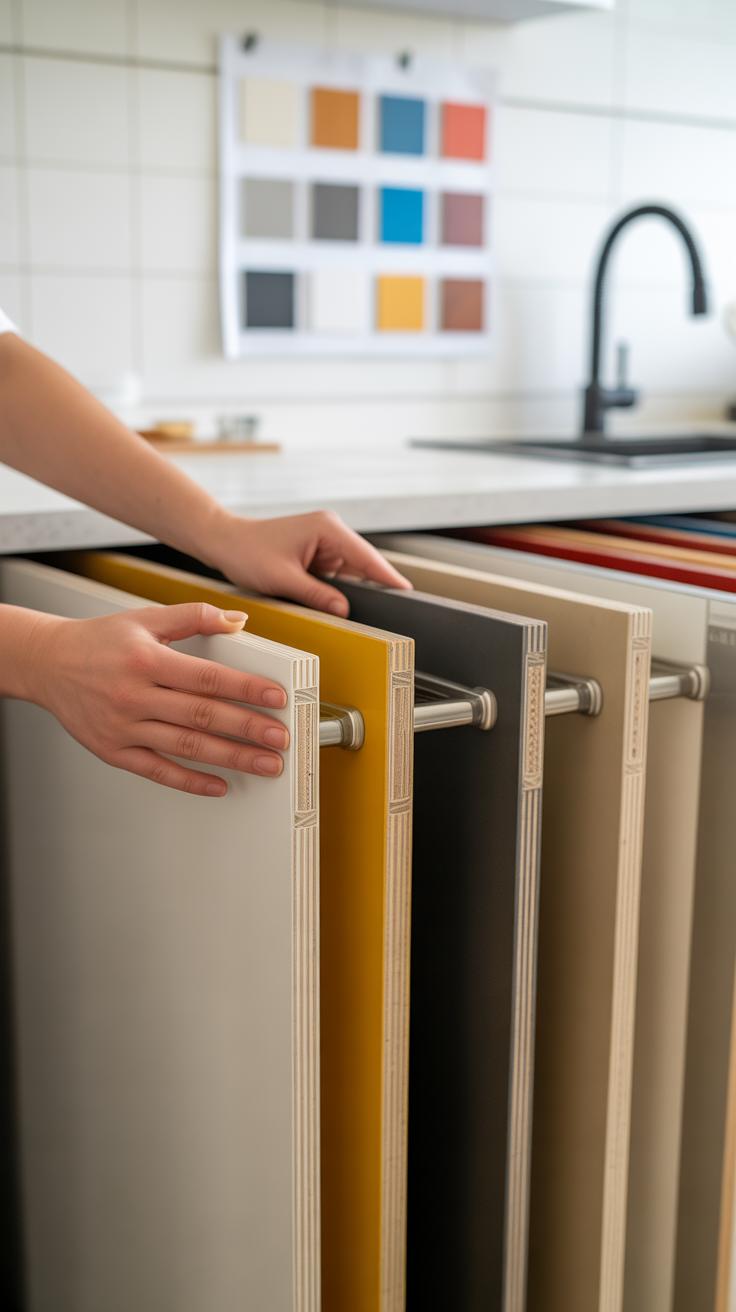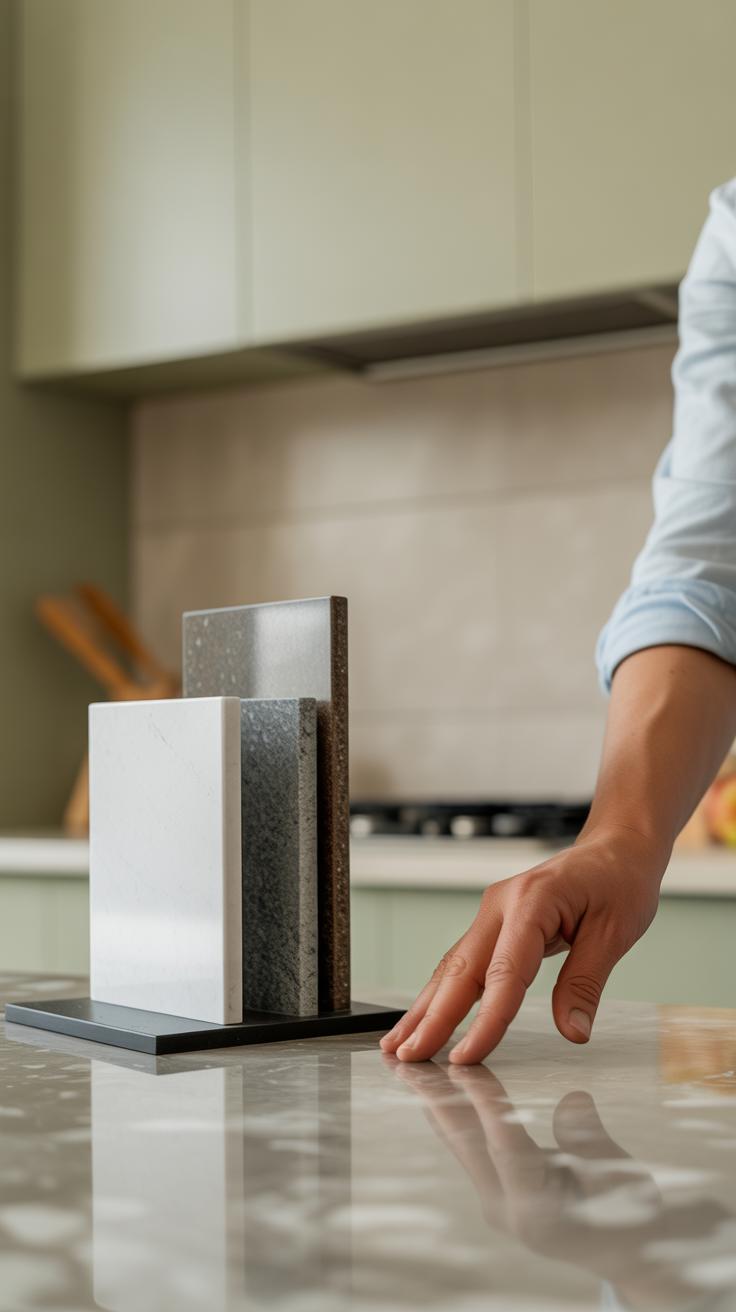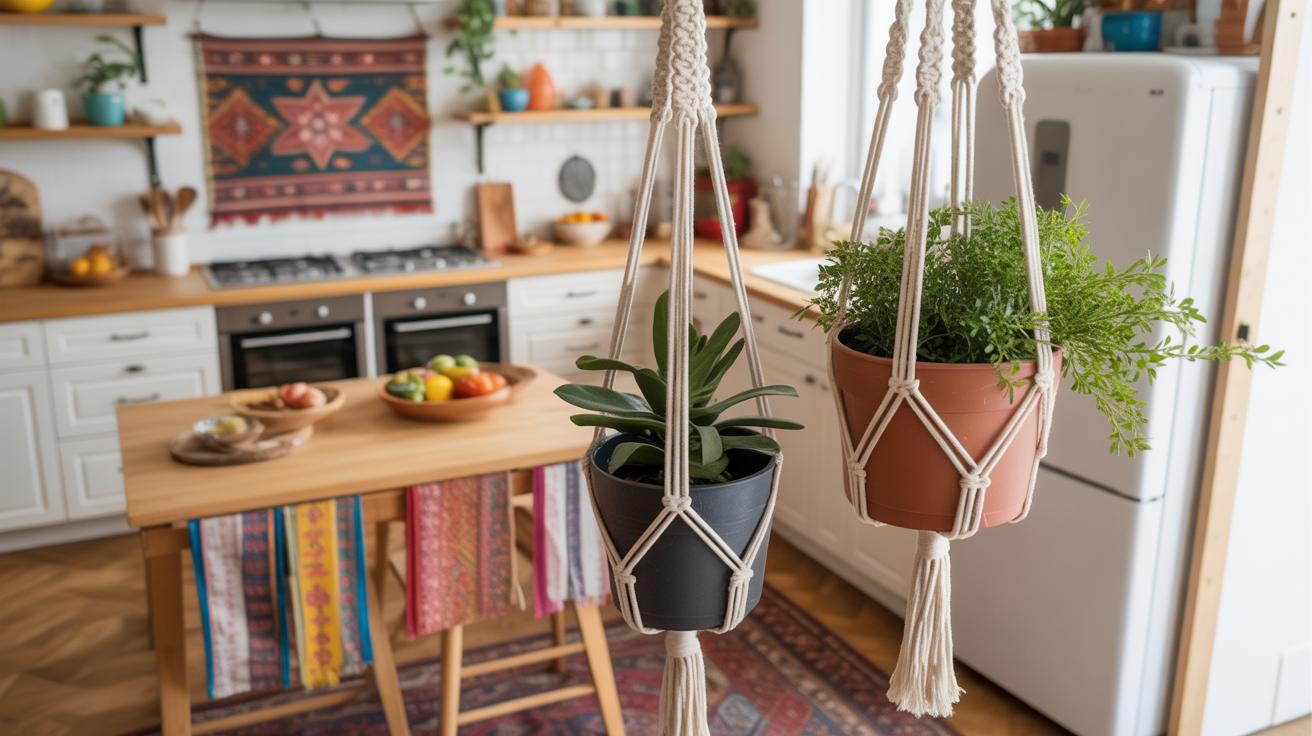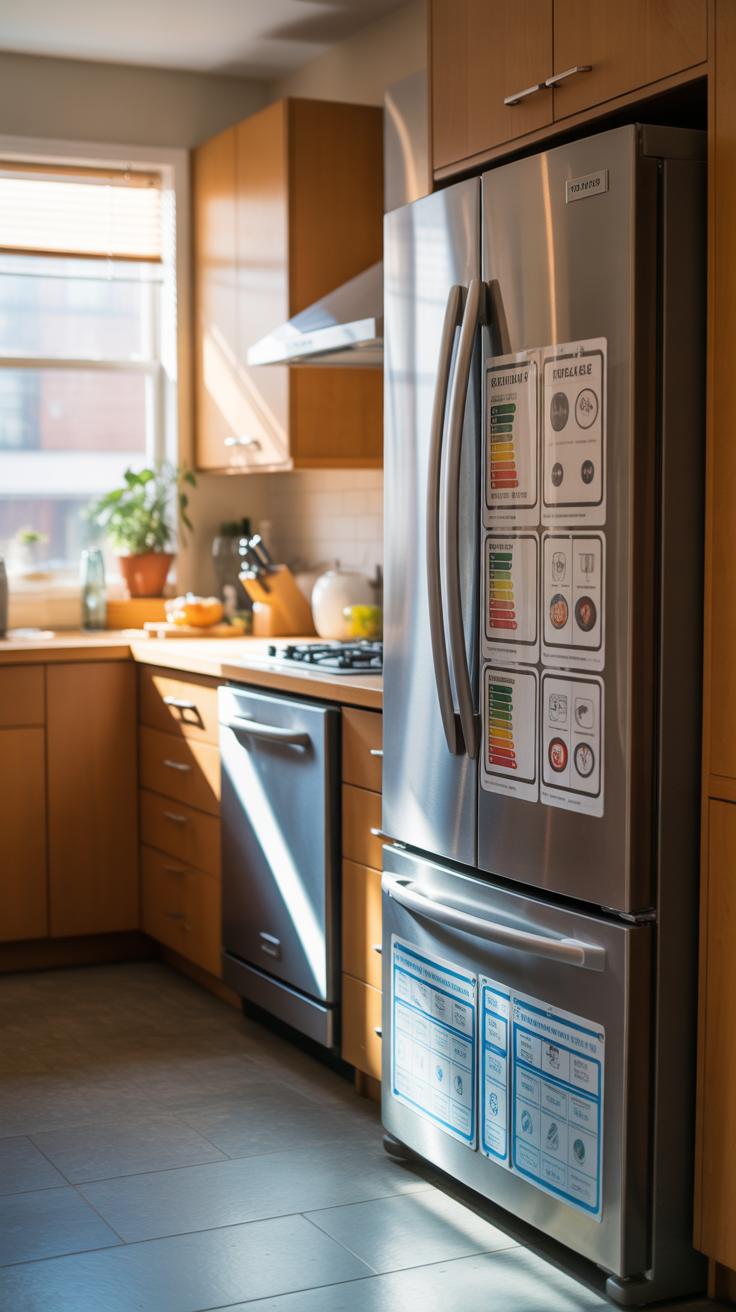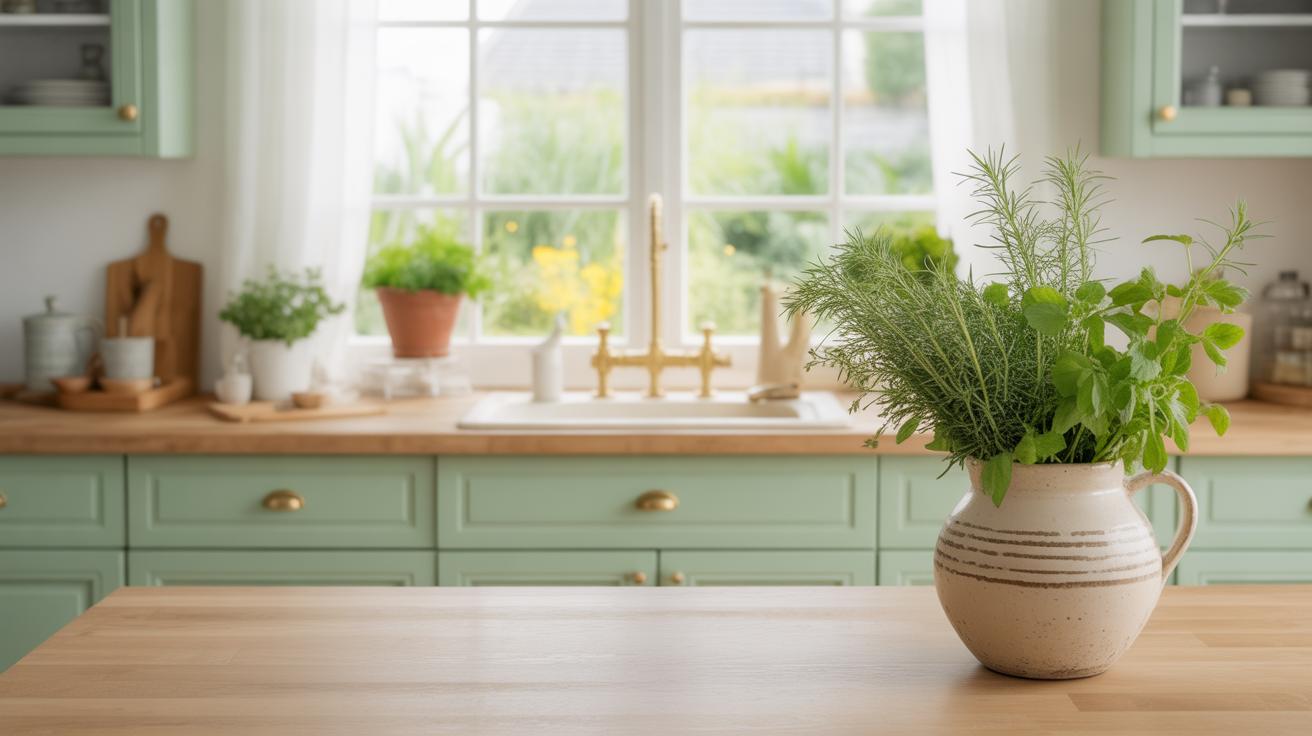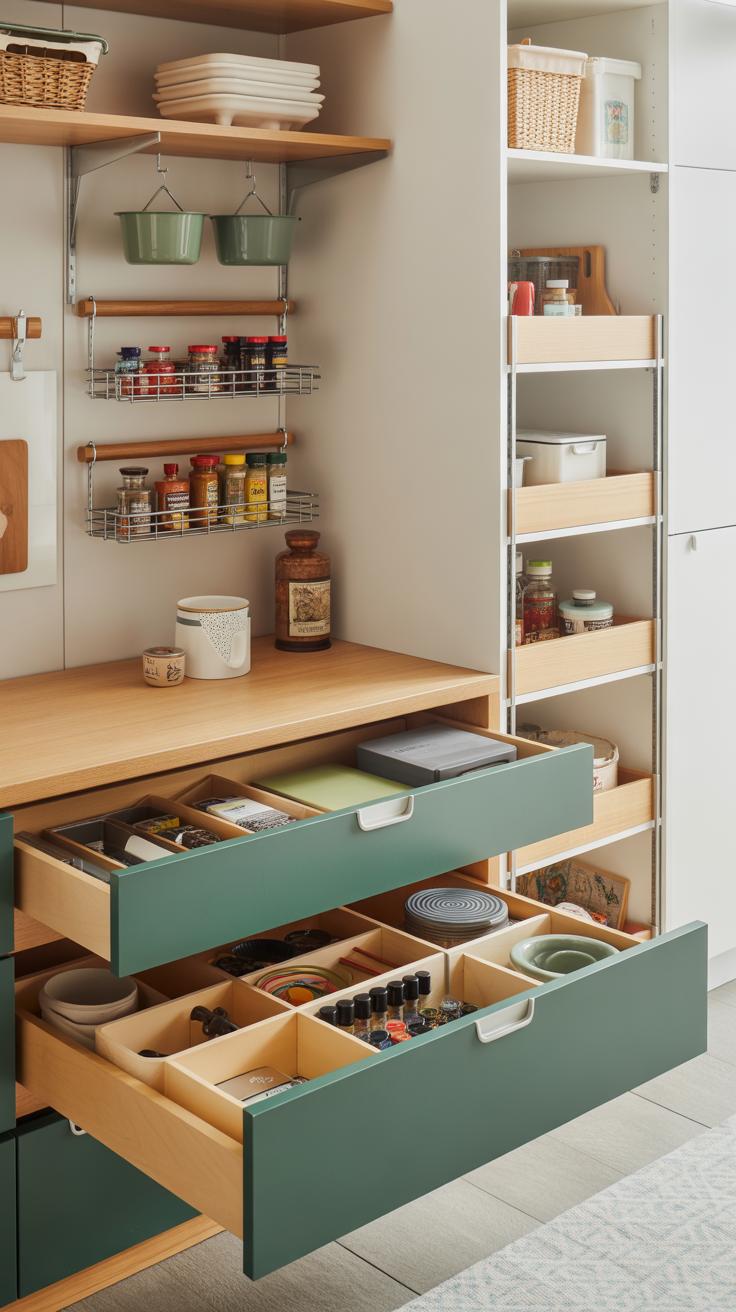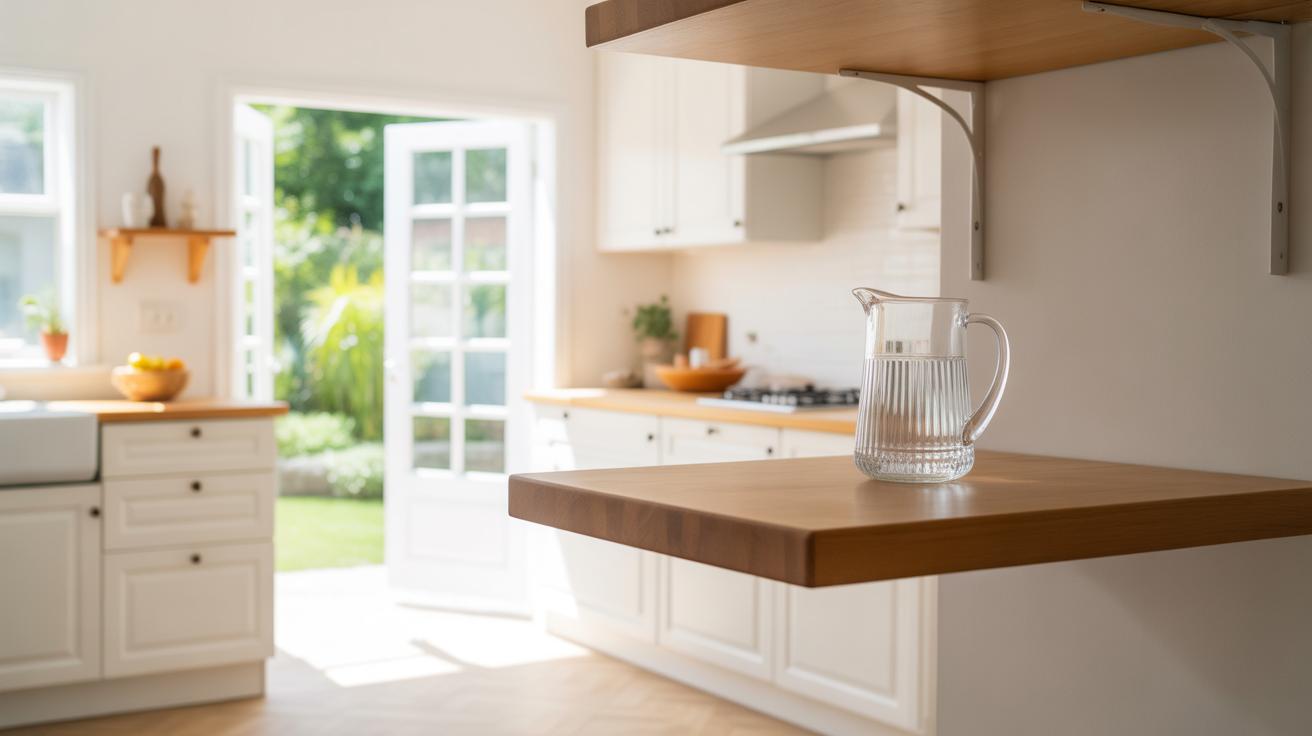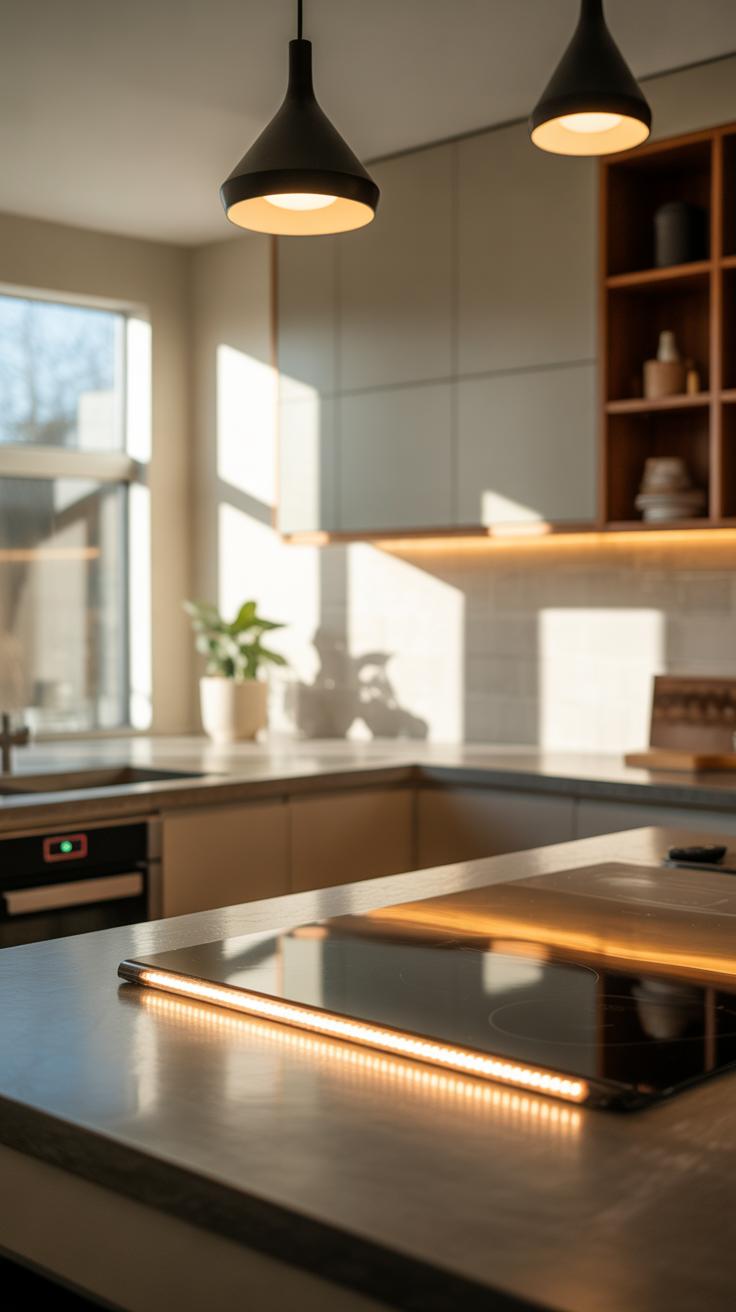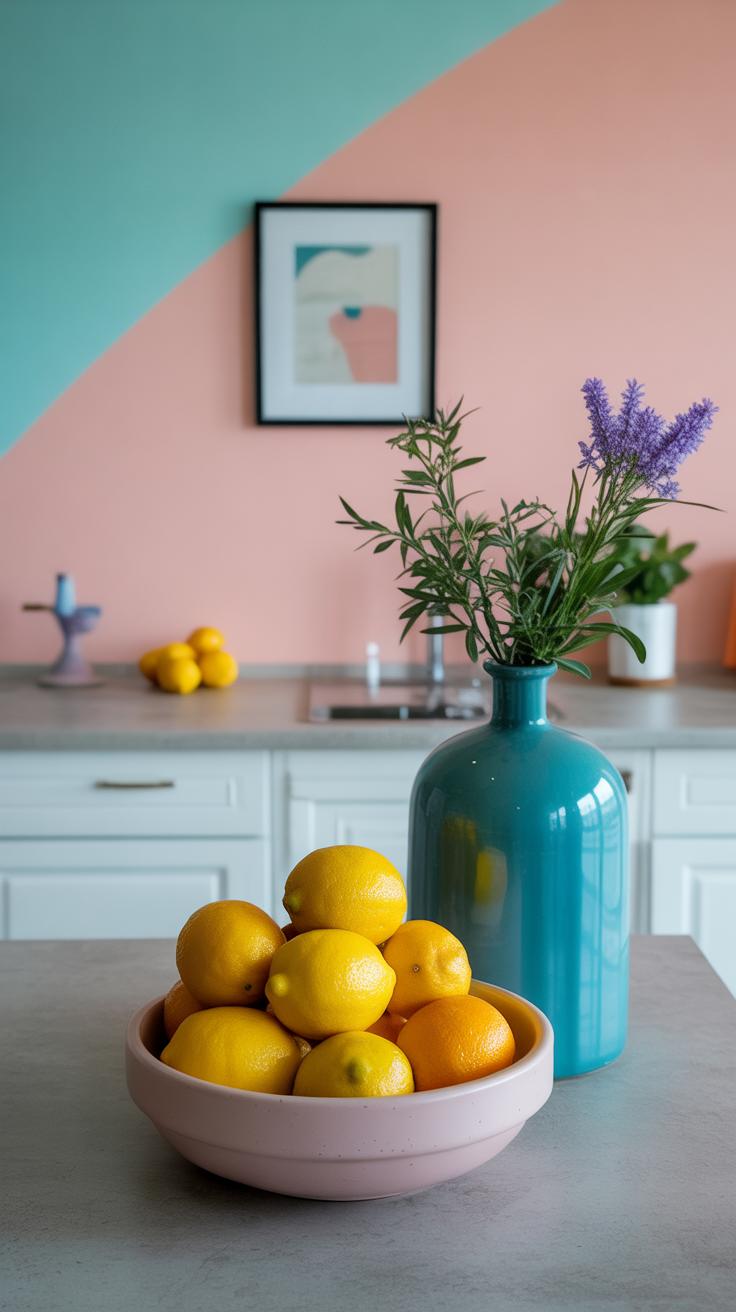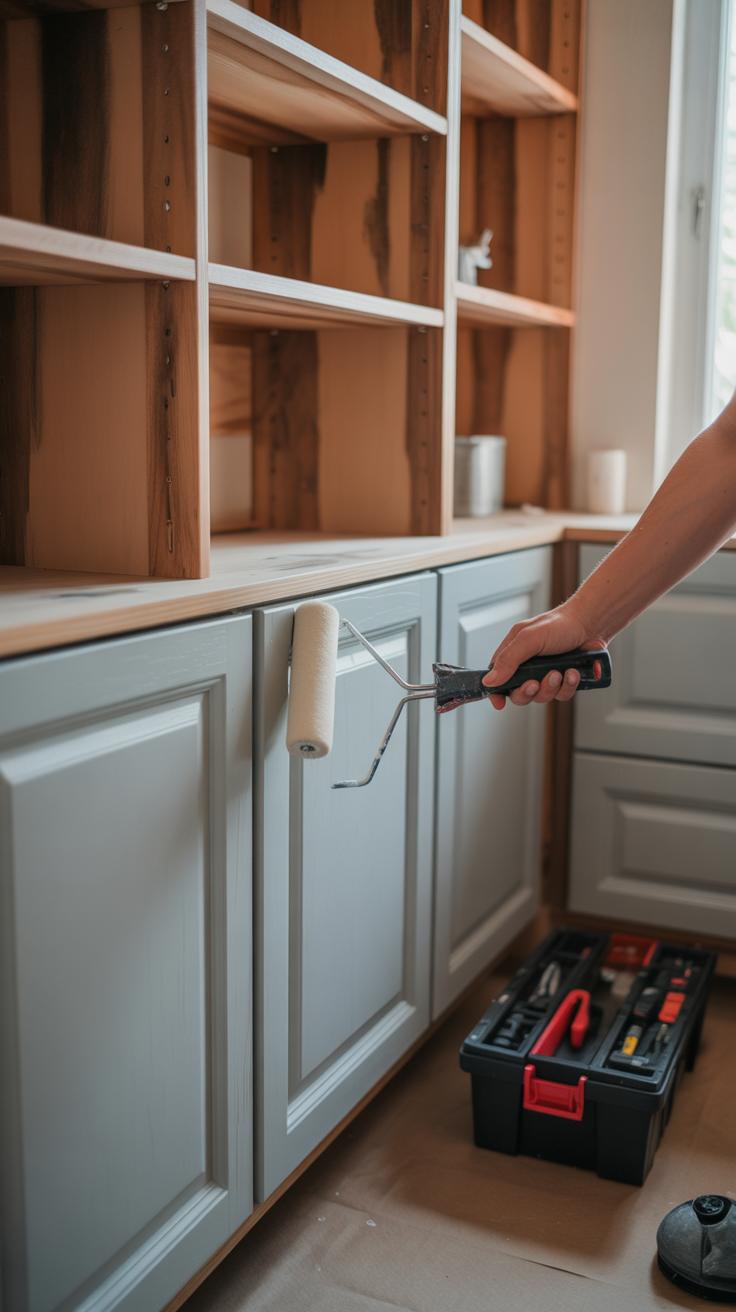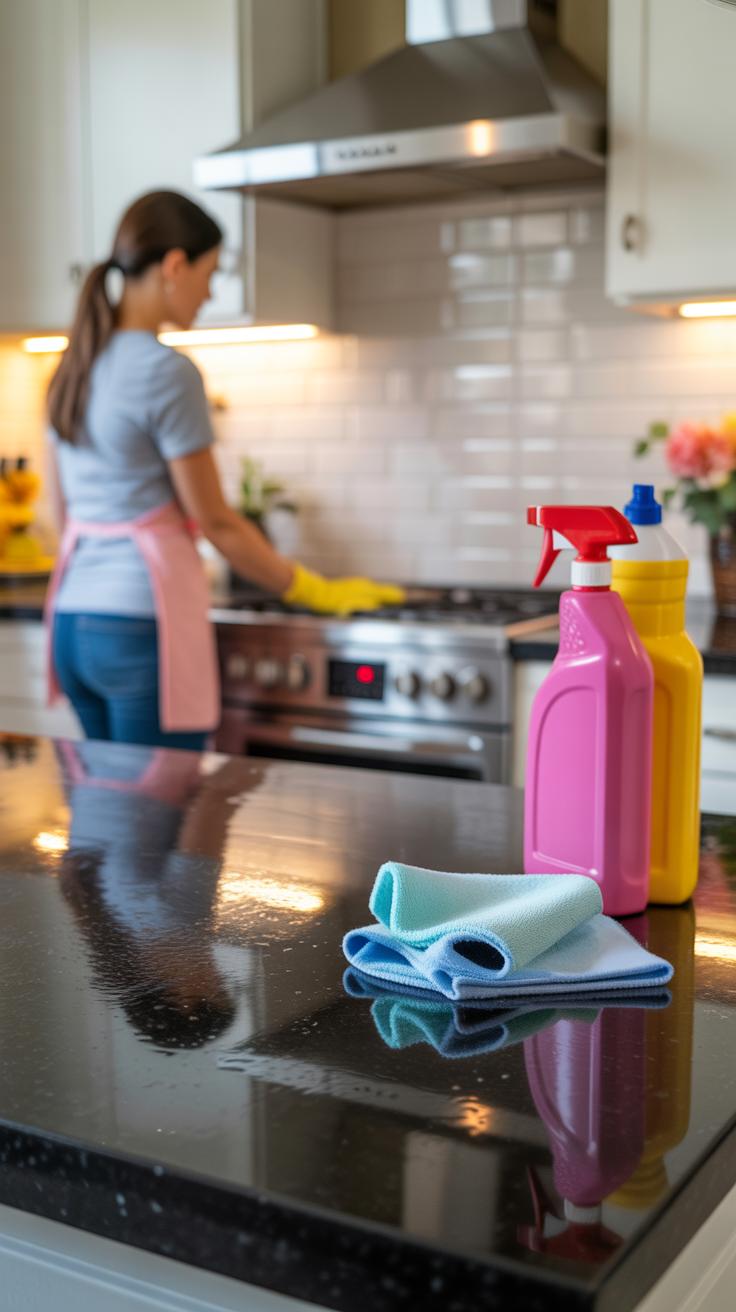Introduction
Designing your dream kitchen is a fun and rewarding project. You want a space that feels just right for your cooking, eating, and gathering. But you might worry about costs. Good news: you can create a stylish kitchen without spending a lot of money. Thoughtful planning and smart choices let you have the kitchen you picture, even with budget limits.
This article guides you through practical steps to design your dream kitchen on a budget without losing style. From planning your space, choosing materials, picking appliances, to adding personality—we cover it all. Let’s explore ways to make your kitchen lovely, useful, and budget-friendly.
Planning Your Kitchen Layout
Before you dive into cabinets and countertops, you need to figure out what you’re actually working with. Measuring your kitchen space may sound obvious, but it’s easy to skip or guess and then end up with frustrating mistakes. Grab a tape measure—yes, the old-fashioned kind—and note down the length and width of your room, including any nooks, doorways, and windows. Don’t forget to measure the height too, as it affects cabinet selection.
Once you have your measurements, sketch a basic floor plan. Even a rough drawing on graph paper can help. If you’re feeling a bit tech-savvy, apps like SketchUp or even simple room planner tools can make this easier and give you a visual to fiddle with. Seeing your kitchen layout on paper or screen helps prevent costly rearrangements later.
Next, think about dividing the kitchen into clear work zones. Breaking down your kitchen into areas for cooking, cleaning, and prepping makes the space more user-friendly. So, place the stove and oven where cooking happens, the sink and dishwasher for cleaning, and a countertop area nearby for peeling vegetables or assembling meals. Ideally, these zones should flow naturally, reducing back-and-forth steps.
- Locate the refrigerator close to your prep area to easily grab ingredients.
- Keep cleaning and cooking zones separate but connected to reduce clutter.
- Think about your daily habits—how often do you cook vs. clean? This might shift your zone priorities.
Planning a kitchen layout is a bit like solving a puzzle with a few pieces missing. Your space, your budget, and your routines all affect how you arrange things. So, take your time here. It’s often the details that save you money and time down the line.
Setting a Realistic Budget
Figuring out how much you can—or should—spend on your kitchen remodel can feel overwhelming. The trick is to break it down into parts. Start with labor costs: installers, electricians, plumbers—these can add up quickly. It’s easy to forget these until the final bill arrives. Materials are next, and they span a wide range. You might fall in love with a countertop that’s out of your price range or cabinets that cost twice what you expected. Appliances can tip the scales too, especially if you want smart features or energy efficiency.
And don’t forget unexpected expenses. Nothing is flawless in renovation, and even the best plans can hit snags—a hidden water pipe, for example, or extra wall repairs. I’ve learned to add about 10-15% extra for surprises. It’s not an exact science, but it helps keep stress in check.
Breaking Down Costs
Breaking your budget into categories makes it easier to track money and stay on target. Here’s what to list:
- Cabinets: price per linear foot, plus hardware if not included
- Countertops: cost depends on material and installation
- Appliances: factor in delivery and setup fees
- Installation: labor charges or contractor fees
- Additional materials: flooring, lighting, backsplashes, paint
Creating a spreadsheet is a lifesaver. I like columns for estimated cost, actual cost, and notes—this way, you notice early if something drifts beyond your comfort zone. Tracking every expense, even small ones like screws or sealants, rounds out the picture.
Setting Priorities
Once you see your numbers laid out, you’ll probably spot where you want to splurge and where to cut back. Ask yourself: which parts do I use most? Maybe you cook a lot, so appliances deserve investment. Or perhaps the cabinets’ look matters more because you spend time entertaining.
Think about spending on:
- Durable countertops that tolerate daily wear
- Appliances that make your routine easier
- Cabinet aesthetics if style is top priority
- Lighting and functional work zones to improve usability
On the flip side, saving on cabinet materials or choosing simpler backsplashes can free up funds for those priority spots. It’s a bit like a balancing act and, honestly, a bit of trial and error. But knowing where to allocate your money can make the difference between loving your kitchen or resenting the bill.
Choosing Affordable Cabinet Materials
When it comes to cabinets, your choices can really shape the feel of your kitchen – style, durability, even maintenance – all influence how your space holds up and looks over time. You don’t have to splurge on solid hardwood to get something decent. There are more wallet-friendly materials like thermofoil, MDF, and laminate that offer quite a bit for their price.
Take thermofoil cabinets, for example. They’re made by applying a vinyl layer over MDF, which creates a smooth, often shiny finish. They look clean and neat. What I find interesting is how easy they are to wipe down, making them good if you want low-maintenance surfaces. Just mind the heat – because that vinyl layer can warp or bubble if exposed to hot pots or direct heat. So, keeping your stove vents working and using trivets isn’t just good advice, it truly matters.
Then there’s MDF, or medium-density fiberboard, which serves as a solid base for different finishes. MDF itself is denser than particle board, giving it a smoother surface for painting or laminating. It doesn’t have natural wood grain but can mimic wood when painted or covered, and it’s resistant to warping, which wood sometimes struggles with. MDF cabinets can be surprisingly sleek or rustic, depending on your finish choice.
Laminate cabinets often feature a plastic-coated finish over particleboard or MDF, and they’re popular because they come in countless colors and patterns. Some laminates now even imitate wood grain quite well. From what I’ve seen, their biggest charm is versatility and price. They aren’t as durable as wood or thermofoil though, so scratches or peeling edges are a risk if you’re not careful.
Think about your kitchen habits. Are you someone who spends a lot of time cooking, needing more sturdy surfaces? Or mostly using the space for lighter tasks? Your choice here reflects what suits your lifestyle and, importantly, where you might want to save or invest slightly more. Cabinet materials don’t have to break the bank but mixing function with style does take a bit of attention.
Selecting Countertops That Fit Your Wallet
Choosing the right countertop can make or break your kitchen’s look—and your budget too. Laminate tops often get overlooked, but they come in a surprising variety of colors and patterns. You could find something mimicking granite or wood grain without spending much. They’re easy to clean and resist stains well, making them practical for most daily tasks. On the flip side, they scratch more easily than stone or solid surfaces, so watch out if you love chopping directly on the counter.
Then there’s butcher block, which adds warmth and character with its natural wood tones. It’s affordable compared to many stones, and you can sand out light scratches or stains. But wood does need a bit more care—regular oiling keeps it from drying out or staining. I’ve had butcher block for a while, and you do notice the occasional ding or water ring, but that’s part of its charm, honestly.
Tile countertops also offer some budget-friendly appeal, especially if you opt for smaller, ceramic tiles. They can look quite stylish and have that handcrafted vibe, but grout cleaning takes effort. Tiles can chip or crack if you drop something heavy, which might mean occasional repairs. Still, tile lets you mix colors or create patterns that suit your style more personally than laminate or butcher block.
So, what’s your kitchen style asking for? Durable? Low maintenance? Cozy warmth? Each option brings something different, and you don’t always have to pay more for a countertop that fits both your wallet and your vision.
Picking EnergyEfficient Appliances
When choosing appliances for your kitchen, energy efficiency isn’t just a buzzword—it really can make a difference in your bills over time. The Energy Star label is the easiest way to spot appliances that use less energy without compromising performance. These labels include detailed info like estimated yearly energy use and costs, which I find super helpful when comparing options.
Look closely at the label to understand how much electricity or water the appliance consumes. Sometimes a model looks cheaper upfront but costs more to run. Taking a minute to check these numbers can stop you from spending more over the long haul.
Size matters too—something like a large refrigerator might be tempting, but if you’re cooking for one or two, a smaller model could save a bundle. The same goes for ovens or dishwashers; go for sizes that fit your routine rather than guessing “bigger is better.”
Features can add a lot to price without always being necessary. For example, fancy smart controls might be fun but skipping them can cut costs significantly. Focus instead on essentials like adjustable shelving, decent capacity, or easy-to-clean surfaces.
Brands such as Whirlpool, LG, and GE often have models that balance cost and reliability well. Personally, I’ve seen friends who lean toward brands like Samsung find slightly higher prices worth it for durability, but if you’re on a tight budget, Whirlpool’s basics usually do the job fine.
Picking the right appliance isn’t just about getting the shiny newest model. Think about what you really need, what will save you money in the long run, and whether a smaller, simpler choice could be smarter. Sometimes, less really does mean more in a kitchen designed both for looks and sensible spending.
Maximizing Storage Space Creatively
Storage is often overlooked until the kitchen feels cluttered, right? But you don’t need to build new cabinets to find more space. Simple solutions like open shelving can do wonders—not just for storage but for style. Open shelves save you money since they’re cheaper than traditional cabinets. Plus, they let you keep things you use daily within easy reach. Imagine grabbing that favorite coffee mug in the morning without opening any doors. It’s practical, but it also adds personality to your kitchen’s look.
Then there’s vertical space. It’s easy to forget that walls can be storage zones too. Installing hooks or racks lets you hang pots, pans, or utensils without complex renovations. Tall cabinets or shelves stretching closer to the ceiling create extra room that is often wasted. You might hesitate, thinking it looks too busy or cluttered—but if done thoughtfully, it can actually make the kitchen feel larger. So, why not give those walls a second chance? You may find you actually enjoy a kitchen that’s open and accessible, even on a tight budget.
Choosing Lighting to Improve Function and Mood
Lighting does more than just brighten your kitchen. It shapes how you feel in the space and how well you can work there. You want lighting that helps you chop veggies without straining your eyes but also makes the room inviting when you’re just hanging out. Striking that balance on a budget can feel tricky, but it’s definitely possible.
Task Lighting in Key Areas
Think about spots where you spend the most time preparing food or washing dishes. Those counters and sinks are prime targets for focused lighting. Simple under-cabinet LED strips or battery-operated puck lights do the job without costing a fortune. These lights bring clarity to cutting and cleaning, cutting down mistakes or accidents. Even a well-placed clamp light can be clever if you’re tight on cash.
Try to place lights where shadows might fall naturally—over the stove, sink, or chopping board. That way, you won’t squint or lean your head awkwardly to see what you’re doing. It may feel like a small detail, but good task lighting really improves everyday kitchen chores.
Adding Warm Ambient Lighting
Now for the mood. Harsh overhead lights can feel cold or clinical. A few warm ceiling lights, pendant lamps, or even string lights can soften things up and add personality. Try using warm-toned bulbs rather than daylight ones. They create a gentle glow that makes the kitchen feel comfortable. Think about the vibe you want—relaxed mornings or cozy dinners.
Pendants over a small island can be surprisingly affordable and add a bit of charm without ringing up the electricity bill. String lights aren’t just for holidays; draped along a window or a shelf, they can be just enough to make the space feel lived-in. You might not realize how much lighting affects your mood until you’ve switched from stark white to something softer. It makes me wonder why we don’t pay more attention to it in budget renovations.
Using Color and Decorations to Add Style
Choosing the right paint color can do a lot more than just cover your walls—it shapes how you feel in your kitchen. Light tones like soft grays, warm whites, or pale blues often make a small space seem larger and more open. On the other hand, if you want a more intimate or cozy vibe, deeper shades such as muted greens, navy, or even a warm terracotta might work better. I once tried a pale yellow in my own kitchen, hoping it’d feel bright and cheerful. It did—but only until I realized it made the space feel a bit restless after a few weeks. Color choice feels kind of personal and subjective—it’s okay to experiment but it’s smart to test samples first.
Painting doesn’t have to drain your funds. You can save by buying smaller amounts of good-quality paint for accent walls or even just the areas you want to highlight. Rolling the walls yourself or recruiting a friend makes a big difference, too. And don’t forget about adding a backsplash—it’s a great way to protect walls and bring in color or texture without being costly. Stick-on tiles or peel-and-stick options can add personality and are easy to install, even if you’re not very handy.
Decorations add charm and–perhaps surprisingly—personality, without a big price tag. I’m thinking about rugs that stand up to spills but also bring warmth underfoot or some well-placed potted herbs. Plants can brighten a spot on the windowsill and add life to corners that otherwise feel dreary. Artwork gives you a chance to express your style. It doesn’t need to be expensive—framed prints or your own photos can work perfectly.
Here are some simple decoration ideas to think about:
- Colorful or patterned kitchen rugs that are washable and durable.
- Succulents or small herb pots for freshness and occasional use in cooking.
- Inexpensive framed prints or DIY art, grouped creatively on a wall.
- Open shelves to display your favorite dishes or vintage finds that tell a story.
Does your kitchen currently feel like it reflects you? Adding these small touches could make all the difference. Sometimes, it’s surprising how much personality a few colors and decorations can add, making your kitchen feel less like a room and more like your space.
DIY Projects to Save Money
Taking on some kitchen projects yourself can really help stretch your budget without losing style. Painting or refinishing cabinets, for example, can breathe new life into tired wood. You don’t have to replace a whole set of cabinets just because the finish looks dull. A little sanding, some primer, followed by quality paint, usually makes a surprising difference. It’s a bit time-consuming, yes, but the result often feels fresh and modern.
Adding new hardware to your cabinets is another straightforward project. Swapping out old knobs and handles for something sleeker or more contemporary can update your kitchen’s look in a snap. It’s easy to do with just a screwdriver and a bit of patience. Plus, you can find stylish options that won’t break the bank.
Both projects let you customize the style to your taste. Maybe you want matte black pulls or brass knobs—it’s your call. And these small changes often have a bigger impact than you expect. Sometimes, I wonder why we overlook them when thinking about kitchen upgrades. It’s simple, direct, and effective.
Maintaining Your Kitchen Long Term
Keeping your kitchen clean and in good shape doesn’t have to feel like a big chore. If you develop a few habits, it can become almost automatic—and might even save you from those surprise costly repairs down the road. For example, wiping down countertops right after cooking stops stains from setting, and catching spills immediately prevents sticky buildup that’s harder to remove later.
Routine Cleaning Habits
Try these daily and weekly tips for staying on top of things:
- Wipe surfaces and backsplashes with a gentle cleaner or just warm soapy water to avoid damage.
- Empty crumbs and spills from your toaster, microwave, and oven regularly. You’d be surprised how quickly grime builds up.
- Sweep floors every day if you can, or at least every few days, and mop weekly to prevent dirt from scratching finishes.
- Clean fridge shelves and door seals monthly to keep odors and mold away.
It’s not about deep cleaning every day, just avoiding the kind of neglect that makes jobs harder later. Sometimes, I skip mopping for a couple of days—because life—but I’m always back at it before the mess gets out of hand.
Upkeep of Cabinets and Countertops
Cabinets and countertops often get overlooked, but they need simple care, too. For wooden cabinets, check hinges and knobs occasionally. Tighten any loose screws—and yes, it’s easy to forget this until a door starts sagging. You can fix minor scratches with furniture markers or a bit of paste wax.
Countertops, especially stone or wood, sometimes need sealing to keep water and stains out. How often? That depends on the material, but maybe once a year or so. Even if you’re unsure, testing a small spot by dripping water on it can show if moisture absorbs—if it does, a sealant might help.
I’ve found sealing my countertops keeps them looking fresh and prevents that gradual wear that’s easy to miss at first. It seems like a small thing until a stain sets in—then you wish you hadn’t skipped it.
Conclusions
Your dream kitchen can come true even if money is tight. By planning well and choosing wisely, you avoid unexpected costs and make smart spending decisions. Affordable materials and clever designs create a kitchen that looks great and works well for you and your family.
Remember, your kitchen is for you. Focus on what matters most for your daily life. Style shows in details, colors, and layout more than price tags. Use this guide as a roadmap to build a kitchen you enjoy every day without overspending.

